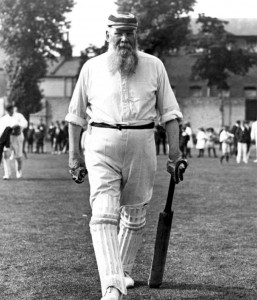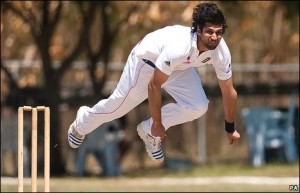
A gradual but inevitable descent into cricket-based loathing and bile.
County Cricket 2013: The Winnowing Fork II
This is part two of our look at the fortunes of the counties since the split of the County Championship into two divisions in 2000, testing the hypothesis that “look, some of the counties are just really crap, ok?” Last week we took a look at how long the counties have spent in each division, basically giving us another excuse, should one be needed, to have a laugh at Gloucestershire’s expense. This week, we ask, from which counties do the England players usually get picked from?
For these notes we set out all the cricketers who have played for England since January 2000 – and then had to have a long lie-down in a dark room. Seriously, the number of unlikely lads is staggering, and worth remembering whenever we josh about Australia having to continuously select Ed Cowan. The list below simply divides all those players per the county they were representing at the time. It includes all three formats – so Gloucestershire aren’t represented solely by Jon Lewis but also Mark Alleyne and Jeremy Snape – and makes no accounting for success or otherwise. For this exercise, if a player has played internationally whilst on the books of two or more counties, he’s included for each; we’ll look at the production of players later. The other explanatory note is that the brackets show the number of players who had debuted for England before 2000 and the second figure the number who debuted after. So Derbyshire are represented by Dominic Cork, and no-one else, whilst for Durham, Paul Collingwood et al all debuted later than 2000.
- Derbyshire: (1) 0
- Durham: (0) 7
- Essex: (2) 4
- Glamorgan: (2) 2
- Gloucestershire: (1) 2
- Hampshire: (3) 6
- Kent: (1) 6
- Lancashire: (3) 5
- Leicestershire: (1) 4
- Middlesex: (1) 6
- Northamptonshire: (0) 2
- Nottinghamshire: (1) 10
- Somerset: (1) 6
- Surrey: (9) 7
- Sussex: (1) 5
- Warwickshire: (3) 6
- Worcestershire: (1) 3
- Yorkshire: (4) 8
In week one, we identified the six counties (seven if you include Worcestershire) who have spent most time buried in Division Two. Based on the above, there is perhaps unsurprisingly a similar trend: Leicestershire, Worcestershire, Glamorgan, Gloucestershire, Northamptonshire and Derbyshire have had a sum total of 19 England players in this period; Surrey alone have had 16. There are indeed just two counties that don’t more or correlate across both sets of data and they are Kent and Essex, who have had a similar number of players picked for England, but the former have spent more than three times as many seasons in Division One than the latter.
However it is important to offer a caveat to this. To paraphrase Half Man Half Biscuit, Essex gave us Alastair Cook, but they also gave us Paul Grayson. But conversely, despite an Ashes winner and a double-centurion, none of Kent’s selections can really be described massively successful (a team including Mark Ealham, Rob Key, Geraint Jones, James Tredwell and Amjad Khan deserves cult fandom if nothing else). The question of successful players leads on to another bit of information. In this period, 35 players have appeared more than 50 times for England across the three formats. Three of these players are Essex boys (Nasser Hussain, Cook and Ravi Bopara) but only a further three are from the ‘bottom’ counties. Vikram Solanki’s 54 matches all came whilst at Worcestershire; the Northamptonshire spinning twins Graeme Swann and Monty Panesar are the other two, although of course the vast majority of Swann’s England career has come in the time since he left Wantage Road. By way of further comparison, Gloucestershire’s total of 33 caps (shared by the three aforementioned players) is fewer than the total won by Saj Mahmood alone.
Another relevant point is that naturally, in the current era characterised by chock-a-block international calendars and central contracts, England players don’t exactly play for their counties much these days. In six seasons for Hampshire, Kevin Pietersen played seven first-class games. Alastair Cook’s appearance at Chelmsford last week was probably his first since he was a choir boy. Nonetheless, it is evident that of England’s preferred starting Test XI (with a Boot-Rairstow hybrid at No. 6), only Cook and Jimmy Anderson play for counties in Division Two – and Lancashire were relegated just one season after winning the damn thing. It’s also clear that Warwickshire and Nottinghamshire both won their recent titles despite having two senior England internationals absent for much of their campaign – a demonstration of their squad depth as well as the utter awesomeness of Rikki Clarke.
It is not the most shocking revelation to find that the majority of England selections come from the better counties. But in an era when plenty of mediocre players do get the call-up, we’d have expected less of a divide between the top and the bottom. Moreover, in the early part of this period, Leicestershire were still a consistently fine county – having won the Championship in 1996 and 1998 (the 1997 winners? Glamorgan) they finished 4th, 5th and 5th in 2000-2002 and were early pioneers in T20 cricket. Gloucestershire meanwhile were shit hot at limited overs cricket for roughly half a decade. Yet very few players were selected for England and they usually did the square root of bugger all.
The final thing we’ll offer in this piece is that the six counties with the most England players in this time all host Test matches, and of those, only Hampshire are nouveau riche in terms of having a new stadium. Furthermore, take any period since 1945 or so, and we’d wager that its these same counties which have had most England representatives, meaning that this is not just a short-term trend – maybe adding in Middlesex in the 1970s and 1980s. But this does lead us nicely to the next mini-subject: stadium size, money and all that jazz.




No Comments
Post a Comment